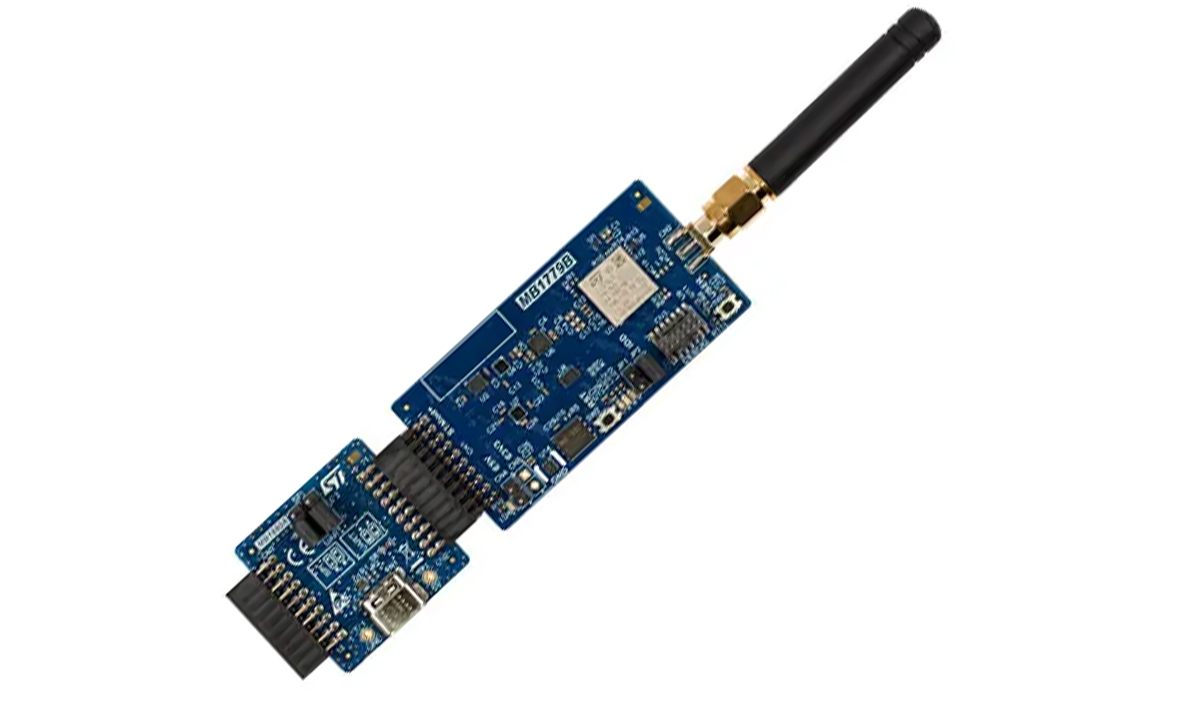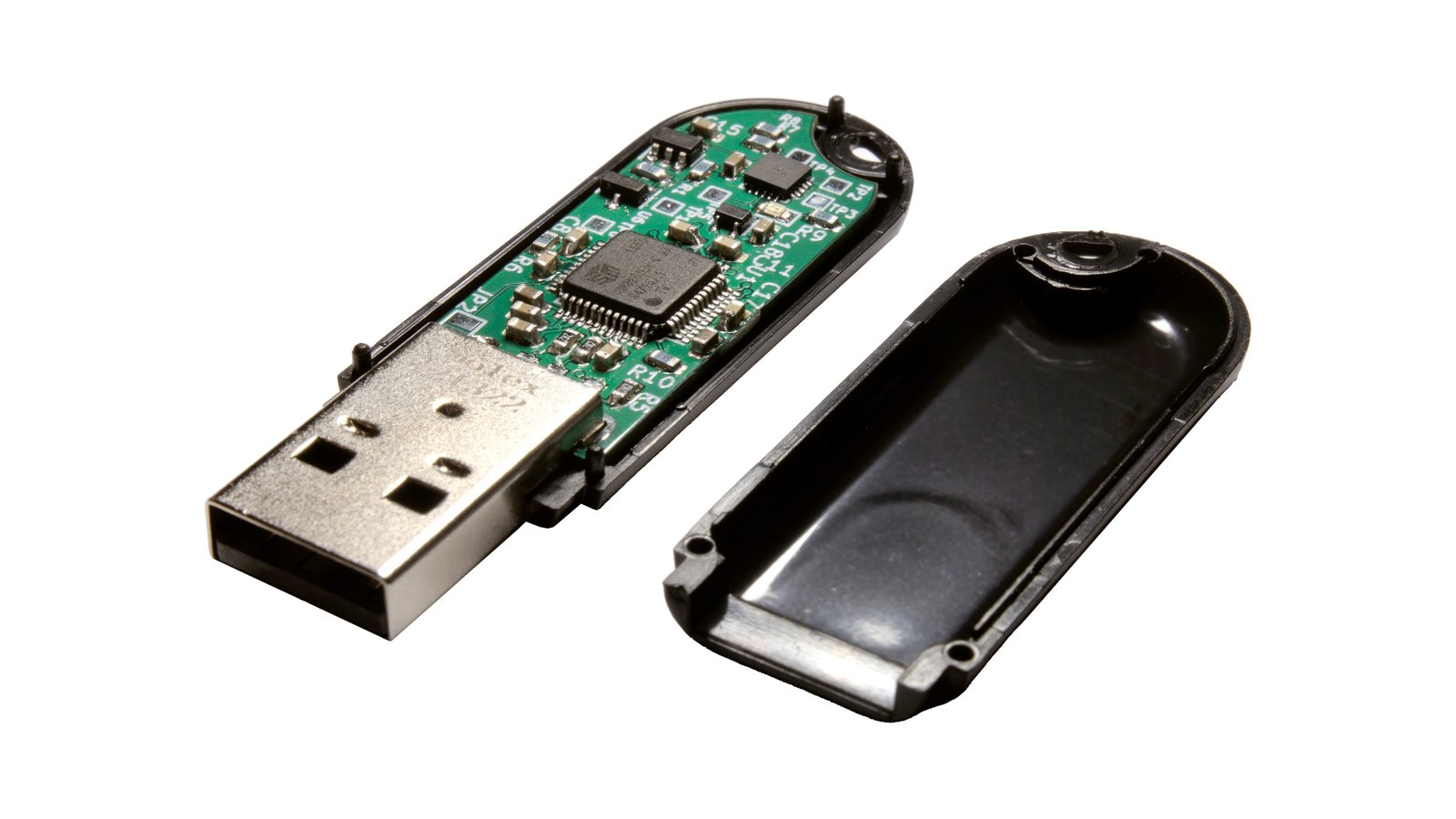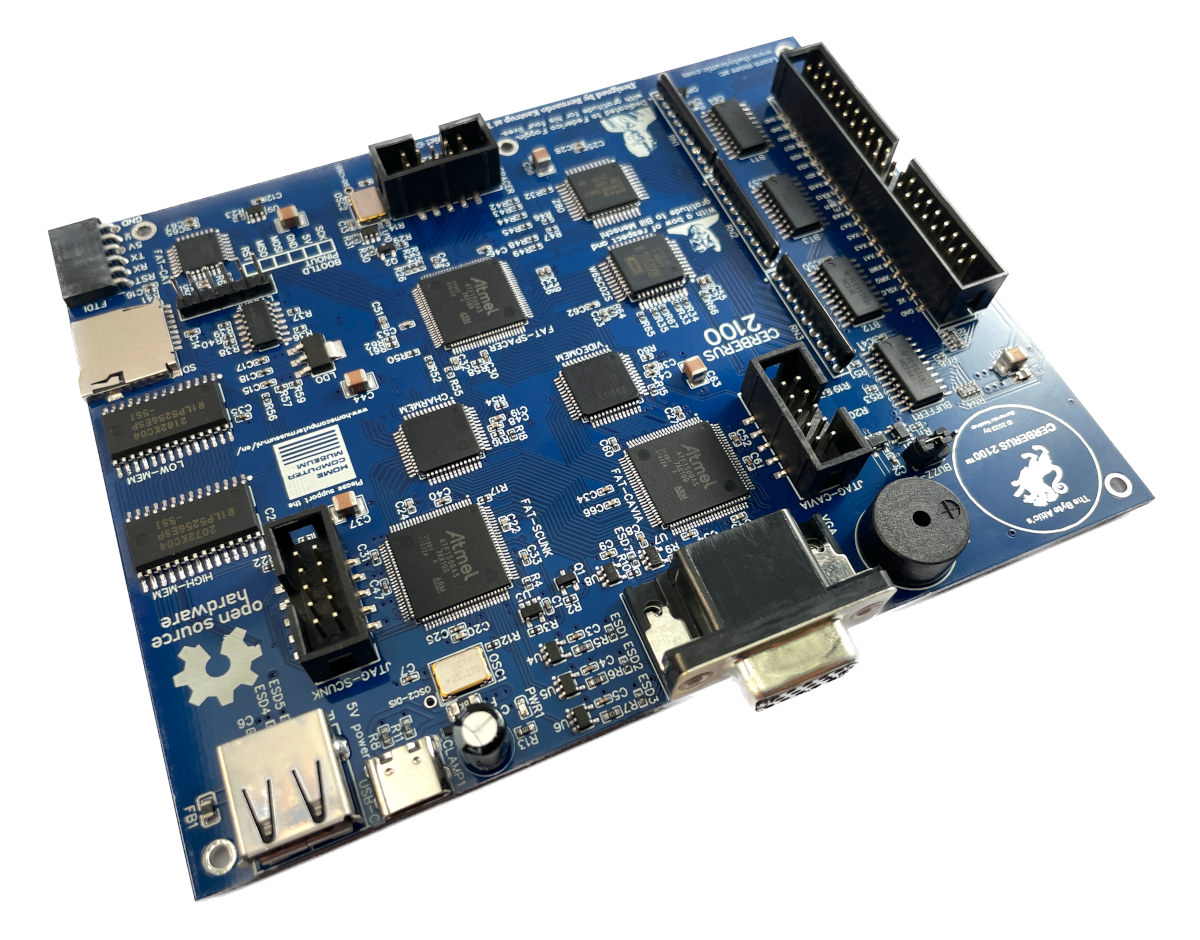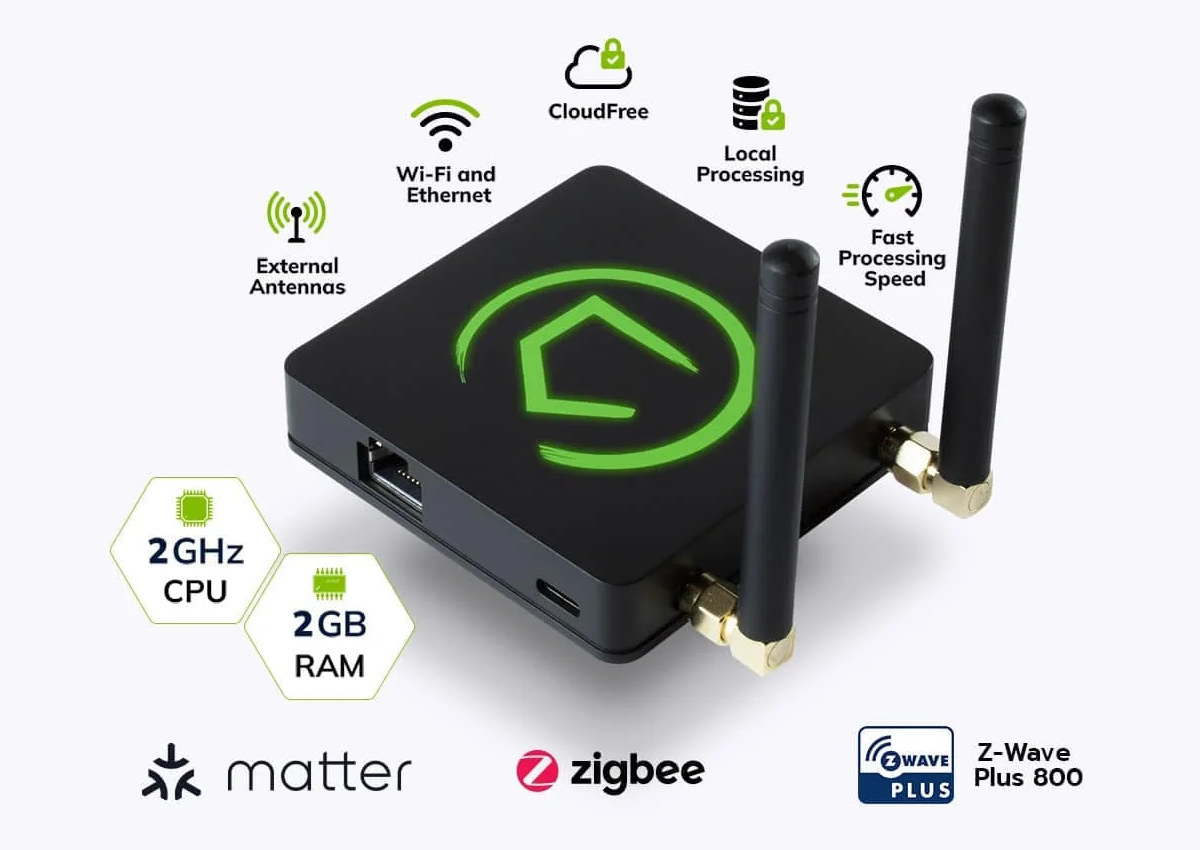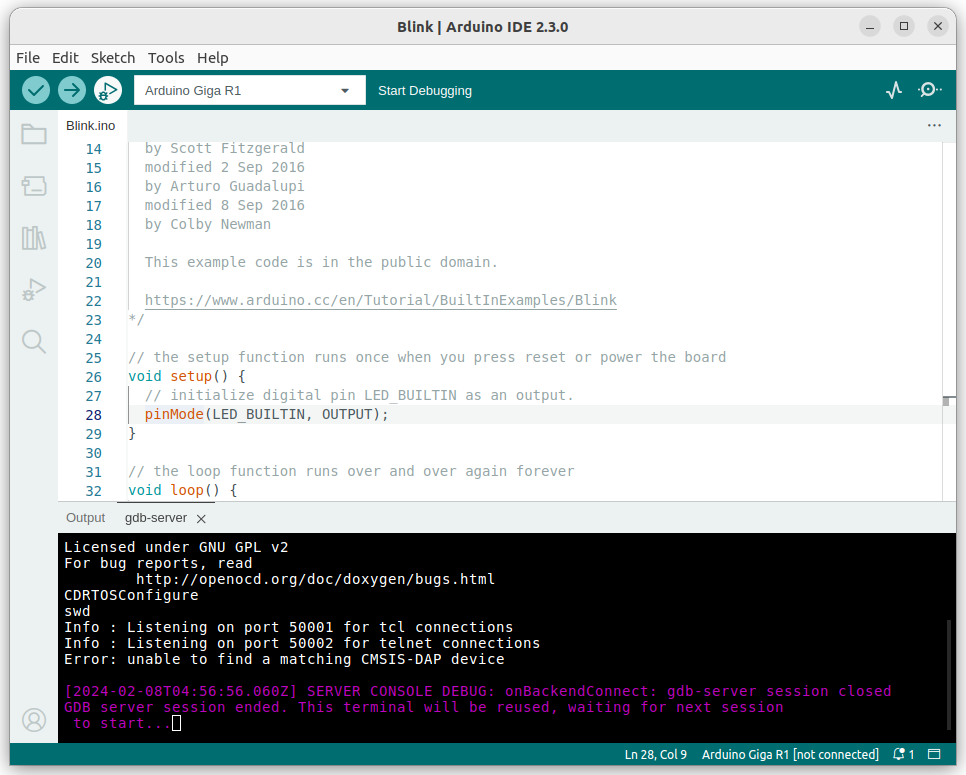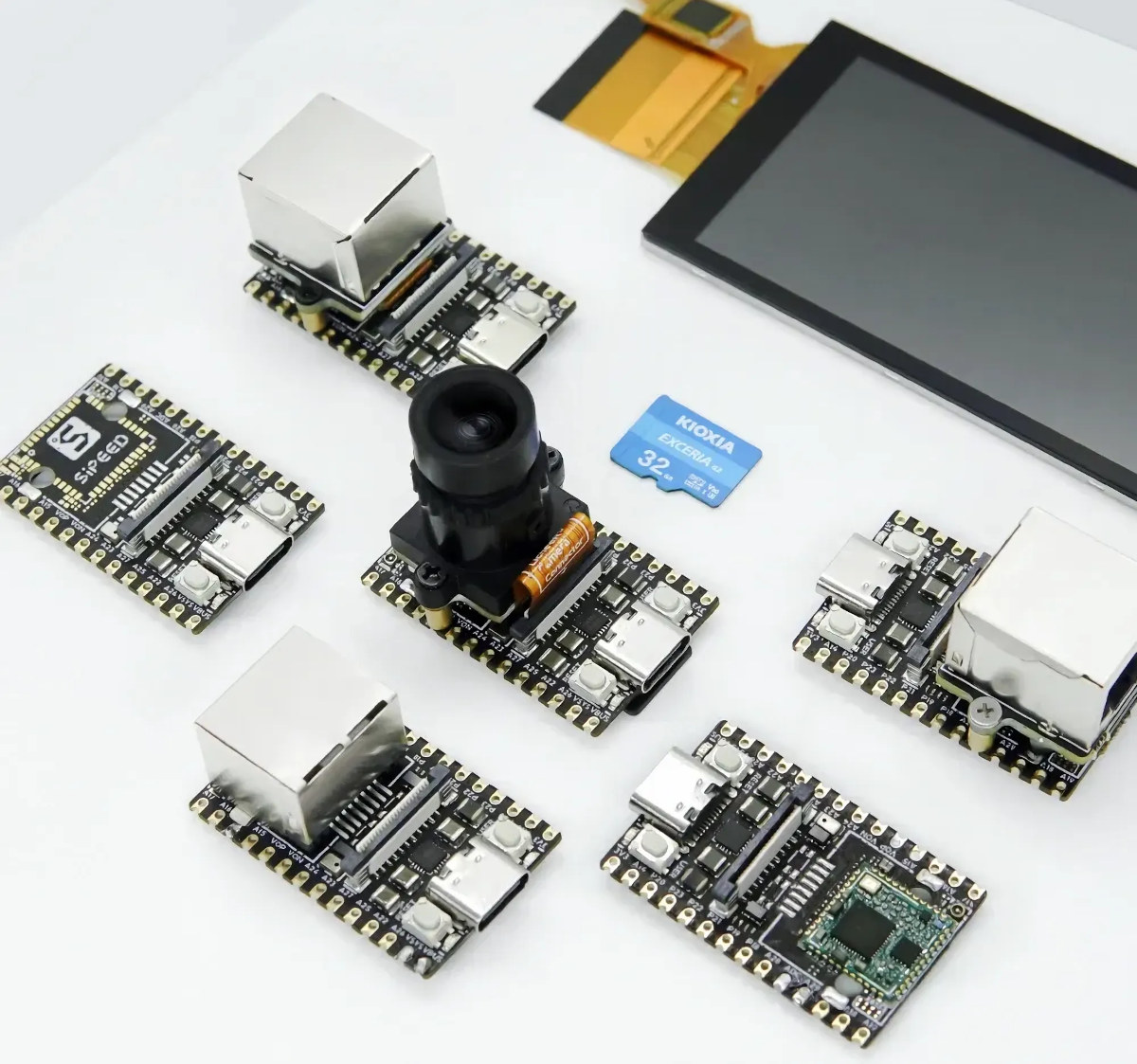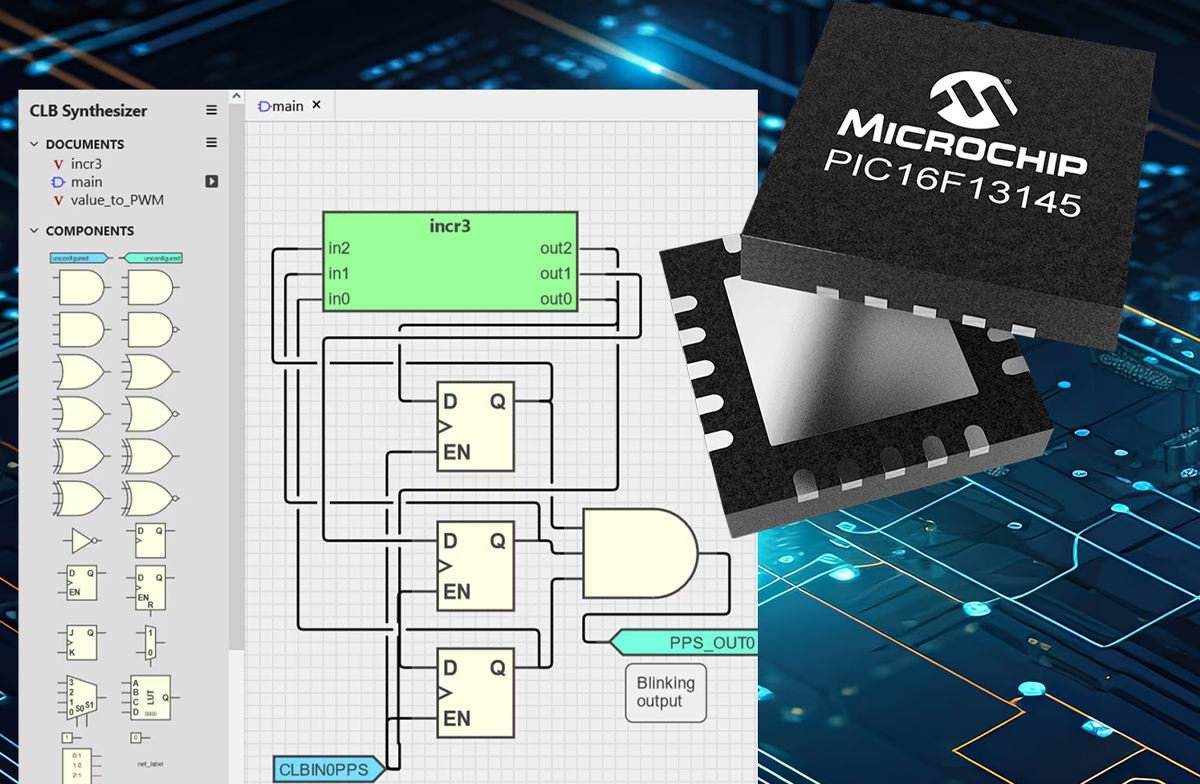STMicroelectronics has recently introduced the STM32WL5MOC system in package (SiP) module with a dual-core STM32 microcontroller, sub-1 GHz RF radio, power supply, and passive components into a 10×10 mm LGA package. According to ST, the new chip uses the STM32WL module which we have seen used in Arduino MKR-inspired MKR Windy board, smart building, and many other LoRa devices. STMicroelectronics’ STM32WL, an Arm Cortex-M0+ microcontroller, operates in sub-GHz ISM bands (413-479MHz, 826-958MHz, and 169MHz later in 2024) for protocols like wireless M-Bus (mode N) and Wize. It supports multi-protocol and multi-modulation (4-(G)FSK, 2-(G)FSK, (G)MSK, DBPSK, DSSS, OOK, ASK) for various wireless standards (Sigfox, KNX, WiSun, mioty, M-Bus, etc.) and introduces power-saving features for up to 15 years of battery life. STM32WL5MOC SiP module specifications: Core Specifications: STM32WL55JC SoC with 32-bit Arm Cortex-M4 and Cortex-M0+ CPUs, up to 48 MHz. Adaptive real-time accelerator (ART Accelerator) for efficient flash memory execution. DSP instructions […]
Ovrdrive USB is an open-source, privacy-oriented USB flash drive that can self-destruct (Crowdfunding)
We have previously covered the Tillitis Tkey, an open-source security key in a USB-C case but the Ovrdrive USB stick is not a security key. It is a simple, plain USB flash drive with a special security feature. It will appear completely blank unless you plug this drive in three times in quick succession. The Ovrdrive flash drive is aimed at journalists in repressive areas and security researchers but may be useful to other security and open-source hardware enthusiasts. As for how it works, the Ovrdrive has two identical circuits connected to the ATtiny24A microcontroller that controls the rapid plug-in functionality. When the flash is plugged in, the microcontroller powers on, and the CHG1 node goes high, charging C3 through D2. The pin will remain high for a while and then slowly discharge via R1 and body resistance. C3 and the identical C14 will remain high through power cycling/a quick […]
CERBERUS 2100 is a BASIC-programmable educational board with Z80 and 6502 8-bit CPUs
Olimex has just announced the launch of the CERBERUS 2100 open-source hardware, educational, multi-processor 8-bit computer with both Z80 and 6502 CPUs, as well as a Microchip AVR processor serving as an I/O controller. The CERBERUS 2100 features several CPLD and is fully programmable from the lowest level (individual gates and flip-flops) up to BASIC interpreters running on the Z80 and 6502 CPUs. Olimex did not design this themselves as the hardware design is from Bernardo Kastrup (aka TheByteAttic), while BASIC interpreters were written by Alexander Sharikhin (6502) and Dean Belfield (Z80). CERBERUS 2100 specifications: Processors Zilog Z80 8-bit microprocessor at 4 or 8 MHz (user selectable) Western Design Center W65C02S 8-bit microprocessor at 4 or 8 MHz (user selectable) “FAT-CAT” (Custom ATmega328pb) Microchip 8-bit AVR ATMega328PB microcontroller at 16 MHz CPLDs (ATF1508AS-7AX100) FAT-SCUNK (Scan CoUNter and clocK) and FAT-CAVIA (ChAracter Video Adapter) for video circuit connected to a 25.175 […]
ODROID-M1S review – Part 2: Ubuntu 20.04 benchmarks and features testing
Over one month has passed since our unboxing and quick Ubuntu 20.04 testing of the ODROID-M1S SBC and we’ve now had time to test more features and run benchmarks using the official Ubuntu 20.04.6 LTS release from Hardkernel. One user mentioned Ubuntu 22.04 is supported, but that’s supported by a third party and we used the official image for testing.
Our test results will show the performance and supported features of the Rockchip RK3566-powered ODROID-M1S SBC when running Ubuntu 20.04. Read on to find out how well the board works.
ODROID-M1S benchmarks
Let’s start benchmarking the ODROID-M1S with Thomas Kaiser’s sbc-bench.sh script:
Hubitat Elevation Model C-8 Pro Home Automation Hub supports Zigbee, Z-Wave, and Matter devices
Hubitat has recently launched the Elevation Model C-8 Pro Home Automation hub with a Z-Wave 800 radio, a Zigbee 3.0 radio, Wi-Fi, and Ethernet connectivity that upgrade on the earlier C-8 model with more memory (2GB RAM), and a faster 2.0 GHz Cortex-A55 processor. I’ve never written about Hubitat Smart Home solutions, but they seem to have an active community of users, so I’ll check out their latest Elevation Model C-8 Pro gateway and what they have to offer in terms of software and device support. Hubitat Elevation Model C-8 Pro specifications: SoC – Arm Cortex A55 processor @ 2.016 GHz (that could be the Amlogic S905X3 found in the ODROID-C4 SBC) System Memory – 2GB RAM Storage – TBD Connectivity Ethernet RJ45 port WiFi Z-Wave 800 radio Zigbee 3.0 radio Matter support 2x external antennas Power Supply – 5V via USB-C port Dimensions – 8.2 x 7.5 x 1.7 […]
Arduino IDE 2.3 released with the Debug feature now considered stable
Arduino IDE 2.3 has just been released with a range of bug fixes and improvements, but the main change is that the debug feature is not experimental anymore and is now considered stable. Bug fixes include addressing CVE-2023-4863 security flaw (See GitHub for related commits) and based on the wording used in the announcement it looks to be the only one… So the main news is that the Debug feature is now fully incorporated into the IDE. But what is it exactly? The new documentation website explains that Arduino CLI 0.9.0 and Arduino IDE 2.x support “sketch debugging” with openocd server. Arduino also explains it’s currently supported by Arduino boards based on the Mbed core including GIGA R1 WiFi, Portenta H7, Opta, Nano BLE, and Nano RP2040 Connect, and Renesas-based boards such as UNO R4 and Portenta C33 will get support very soon. The company also says they are working […]
LicheeRV Nano – A low-cost SG2002 RISC-V and Arm camera and display board with optional WiFi 6 and/or Ethernet
When I wrote about the SOPHGO SG2002 (and SG2000) RISC-V, Arm, and 8051 AIoT processor yesterday, I noted several boards were in development, but I had not noticed the Sipeed LicheeRV Nano (Beta) was already available for sale, so let’s have a closer look. It’s an inexpensive, tiny camera and display board running Linux with optional support for WiFi 6 and 10/100M Ethernet connectivity which somewhat reminds me of the Breadbee SBC based on MStar MSC313E Camera SoC. Sipeed also provides accessories such as a camera module and a touchscreen display to quickly get started. LicheeRV Nano specifications: SoC – SOPHGO SG2002 Main core – 1GHz 64-bit RISC-V C906 or Arm Cortex-A53 core (selectable) Minor core – 700MHz 64-bit RISC-V C906 core Low-power core – 25 to 300MHz 8051 MCU core NPU – 1 TOPS INT8, supports BF16 Integrated 256MB DDR3 (SiP) Storage – MicroSD card slot and SD NAND […]
Microchip introduces PIC16F13145 Series MCUs with customizable logic
Microchip recently introduced the PIC16F13145 series of 8-bit MCUs featuring a Configurable Logic Block (CLB). This allows users to create custom hardware-based logic functions within the MCU. This approach lowers the BOM costs and boosts performance. Last year, we saw Microchip introduce PIC32CZ Arm MCU with a Hardware Security Module (HSM) and before that, we saw they launched LAN8650/LAN8651 10BASE-T1S single-pair Ethernet Controllers. Feel free to check those out if you are interested in the topics. Microchip PIC16F13145 Series MCU Specification: 32MHz PIC16 CPU core Up to 1KB User SRAM for application data Up to 14KB Flash memory with code protection features CLB Capabilities: Up to 32 basic logic elements – AND/OR/NAND/NOR gates, buffers/inverting buffers, D/JK flip-flops, multiplexers, 4-input LUT Dynamic configuration for on-the-fly changes Tri-state logic capability Inputs/outputs from software, I/O pins, and PIC® peripherals (ADC, PWM, DAC, etc.) Less than 6 ns BLE propagation delay at 5.5V (typical) […]


